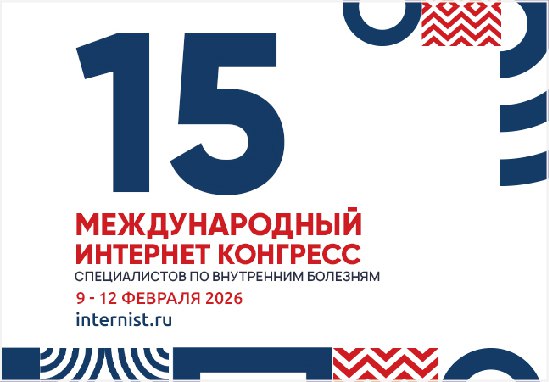Safety and Effectiveness of Electrical and Pharmacological Cardioversion in Persistent Atrial Fibrillation. Part 2: Assessment of Safety
https://doi.org/10.20996/1819-6446-2018-14-6-826-830
Abstract
Aim. To compare safety of new class III antiarrhythmic drug Refralon with direct current cardioversion (DCC) in patients with persistent atrial fibrillation (AF). Material and methods. 60 patients with persistent AF were randomized to groups of DCC (n=30) and pharmacologic conversion (PCV; n=30). There were no significant differences in age, sex, AF duration, concomitant cardiovascular diseases, CHA2DS2-VASc score and echocardiographic parameters between the groups compared. Initial assessment excluded contraindications to restore sinus rhythm (SR). In DCC group two attempts using biphasic synchronized shocks of 150 J and 170 J were performed. In PCV group patients received up to three subsequent intravenous injections of Refralon 10 μg/kg (maximal dose 30 μg/kg). Results. There were no mortality, stroke, transient ischemic attack, ventricular arrhythmia, asystole longer than 3,0 sec (primary safety criteria) in both groups. Prolongation of QT interval longer than 500 ms observed in 1 of 30 patients (3,3%) in DCC group and in 7 of 30 patients (23,3%) in PCV group. 2 patients (one patient in each group; 3,3%) developed asymptomatic bradycardia after conversion to SR that resolved spontaneously within 30 minutes. 95% confidence interval (95%CI) for secondary safety criteria is [0,02-0,38] for QT prolongation and [-0,04-0,04] for bradycardia. Conclusion. Safety of PCV is noninferior to DCC in patients with persistent AF in terms of primary safety criteria and bradyarrhythmias. More frequent QT interval prolongation to values >500 ms observed in PCV group points to necessity of precautions with use of the drug.
About the Authors
N. Yu. MironovRussian Federation
MD, PhD, Researcher, Department of Clinical Electrophysiology and X-ray Surgical Treatment of Heart Rhythm Disorders
V. V. Vlodzyanovskiy
Russian Federation
MD, Anesthesiologist-Resuscitator, Department of Clinical Electrophysiology and X-ray Surgical Treatment of Heart Rhythm Disorders
Yu. A. Yuricheva
Russian Federation
MD, PhD, Researcher, Department of Clinical Electrophysiology and X-ray Surgical Treatment of Heart Rhythm Disorders
S. F. Sokolov
Russian Federation
MD, PhD, Leading Researcher, Department of Clinical Electrophysiology and X-ray Surgical Treatment of Heart Rhythm Disorders
S. P. Golitsyn
Russian Federation
MD, PhD, Professor, Head of Department of Clinical Electrophysiology and X-ray Surgical Treatment of Heart Rhythm Disorders
L. V. Rosenstraukh
Russian Federation
PhD (Biology), Professor, Academician of the Russian Academy of Sciences, Head of Laboratory of Cardiac Electrophysiology, Institute of Experimental Cardiology
E. I. Chazov
Russian Federation
MD, PhD, Professor, Academician of the Russian Academy of Sciences, Honorary Director
References
1. Kirchhof P., Benussi S., Kotecha D. et al. 2016 ESC Guidelines for the management of atrial fibrillation developed in collaboration with EACTS. Eur Heart J. 2016;37(38):2893-2962. doi:10.1093/eurheartj/ehw210.
2. Tejan-Sie S.A., Murray R.D., Black I.W. et al. Spontaneous conversion of patients with atrial fibrillation scheduled for electrical cardioversion: an ACUTE trial ancillary study. J Am Coll Cardiol. 2003; 42(9):1638-43. doi:10.1016/j.jacc.2003.06.008.
3. Lip G.Y., Laroche C., Ioachim P.M. et al. Prognosis and treatment of atrial fibrillation patients by European cardiologists: one-year follow-up of the EURObservational Research Programme-Atrial Fibrillation General Registry Pilot Phase (EORP-AF Pilot registry). Eur Heart J. 2014;35(47):3365-76. doi:10.1093/eurheartj/ehu374.
4. Camm A.J., Kirchhof P., Lip G.Y. et al. Guidelines for the management of atrial fibrillation: the Task Force for the Management of Atrial Fibrillation of the European Society of Cardiology (ESC). Eur Heart J. 2010; 31(19):2369-429. doi:10.1093/eurheartj/ehq278.
5. Hellman T., Kiviniemi T., Nuotio I. et al. Optimal timing for cardioversion in patients with atrial fibrillation. Clin Cardiol. 2018; 41(7):966-71. doi:10.1002/clc.22986.
6. Yuricheva Yu.A., Sokolov S.F., Golitsyn S.P. et al. Conversion of persistent atrial fibrillation to sinus rhythm using novel class III antiarrhythmic drug Niferidile. Vestnik Aritmologii. 2012;70:32-43. (In Russ.)
7. Mironov N.Y., Vlodzyanovskiy V.V., Yuricheva Y.A., Sokolov S.F., Golitsyn S.P., Rosenstraukh L.V., Chazov E.I. Safety and Effectiveness of Electrical and Pharmacological Cardioversion in Persistent Atrial Fibrillation. Part I: Study Rationale, Design and Assessment of Effectiveness. Rational Pharmacotherapy in Cardiology. 2018;14(5):664-9. (In Russ.) doi:10.20996/1819-6446-2018-14-5-664-669.
8. Mironov N.Yu., Golitsyn S.P., Sokolov S.F. et al. Electrophysiologic effects and antiarrhythmic effectiveness of new class III drug Niferidile in patients with paroxysmal supraventricular tachycardia. Vestnik Aritmologii. 2012;70:5-13 (In Russ.)
9. Rytova A.I., Khlebus E.Y., Shcherbakova N.V. et al. Modern probabilistic and statistical approaches to search for nucleotide sequence options associated with integrated diseases. Russian Journal of Genetics. 2017;53(10):1091-104. (In Russ.)
10. Sauer A.J., Newton-Cheh C. Clinical and genetic determinants of torsade de pointes risk. Circulation. 2012;125(13):1684-94. doi:10.1161/CIRCULATIONAHA.111.080887.
Review
For citations:
Mironov N.Yu., Vlodzyanovskiy V.V., Yuricheva Yu.A., Sokolov S.F., Golitsyn S.P., Rosenstraukh L.V., Chazov E.I. Safety and Effectiveness of Electrical and Pharmacological Cardioversion in Persistent Atrial Fibrillation. Part 2: Assessment of Safety. Rational Pharmacotherapy in Cardiology. 2018;14(6):826-830. https://doi.org/10.20996/1819-6446-2018-14-6-826-830















































